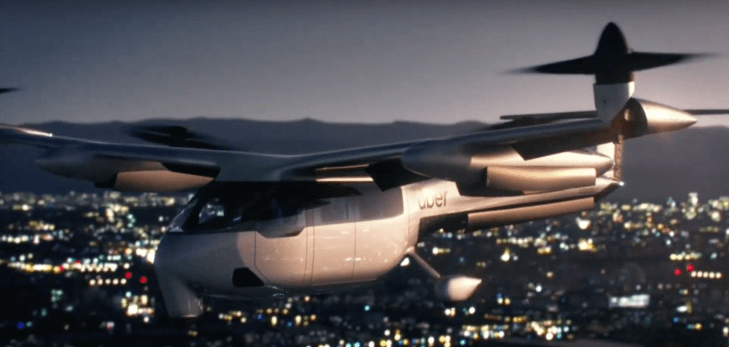Flying taxis are undoubtedly an exciting concept — one that Uber has put a lot of work into making a reality. In order for these electric vertical take-off and landing vehicles to become a reality, they need to have proper batteries, approval from the Federal Aviation Administration, buy-in from cities, public acceptance and, of course, vehicle partners.
Uber is aiming to start testing these aircrafts next year, and wants to commercially deploy Uber Air in Los Angeles, Calif., Dallas-Fort Worth/Frisco, Texas and Melbourne, Australia in 2023.
Right now, the model of Uber Air we may see in the skies will have a pilot on board. The model Uber unveiled at Elevate seats four people and one pilot.
[gallery ids="1841841,1841842,1841843,1841851"]
But there are a lot of moving parts, and the more moving parts there are means more room for error.
Designing the right battery
Let’s start with the batteries. Uber CEO Dara Khosrowshahi has repeatedly said that these vehicles need to be all-electric. But the batteries are nowhere close to where they need to be, Uber Director of Engineering for Energy Storage Systems Celina Mikolajczak told TechCrunch at Uber’s third annual Elevate Summit in Washington, D.C. this week.
Within the battery department alone, there are a lot of pieces to it, Mikolajczak said.
“The first thing you want is you want a cell that is capable of achieving the mission, and we’ve been working to try and identify cells that can do this job,” she said.
To be clear, the job is to travel up to at least 60 miles on a single charge, with a cruise speed of 150 mph. Mikolajczak is confident that current battery technology can achieve the mission, but that doesn’t mean there aren’t challenges. There are challenges around weight, thermal management and safety.

“Those are complicated,” Mikolajczak said. “And we’re working to develop the technologies that let us do that. We’re a ways away. And I think really, anyone that’s working with real intent knows that there’s a lot of work to be done.”
That’s why the demo aircraft will be different from the ones we’ll see in mass production, Mikolajczak said. The ones in the demo aircraft will be prototypes and not designed for high production volume, she said.
“There’s also a question of, okay, you can make a battery pack, and you can do a demonstration aircraft,” she said. “Now, is this going to make economic sense? Are you going to be able to maintain the lifestyle of that battery to really do a commercial operation? And if you think about commercial operations, the time frame is 2023. So there’s quite a lot of work to be done between now and then.”
A fully scaled operation would entail more than 10 flights a day on a single aircraft, she said. To make that economical, Mikolajczak said a lot of design will need to be done on the battery pack.
“Otherwise, you’re going to age your cells and within a few months you’ll be changing the battery pack,” she said. “But for really something that’s commercial, that is mass production, we’re really aiming for a battery pack that lasts about a year, so that means a lot more advanced design.”
Uber also wants Air to be fully autonomous. If you look at where Uber is with its self-driving car efforts, you can only imagine how long it will be until we see autonomous flying taxis.
Ten years from now, that’s when “we’ll have the basis for pursuing autonomy,” Uber Engineering Director of Aviation said at Elevate. But only when these vehicles are autonomous will consumers see the real economic benefits of it.
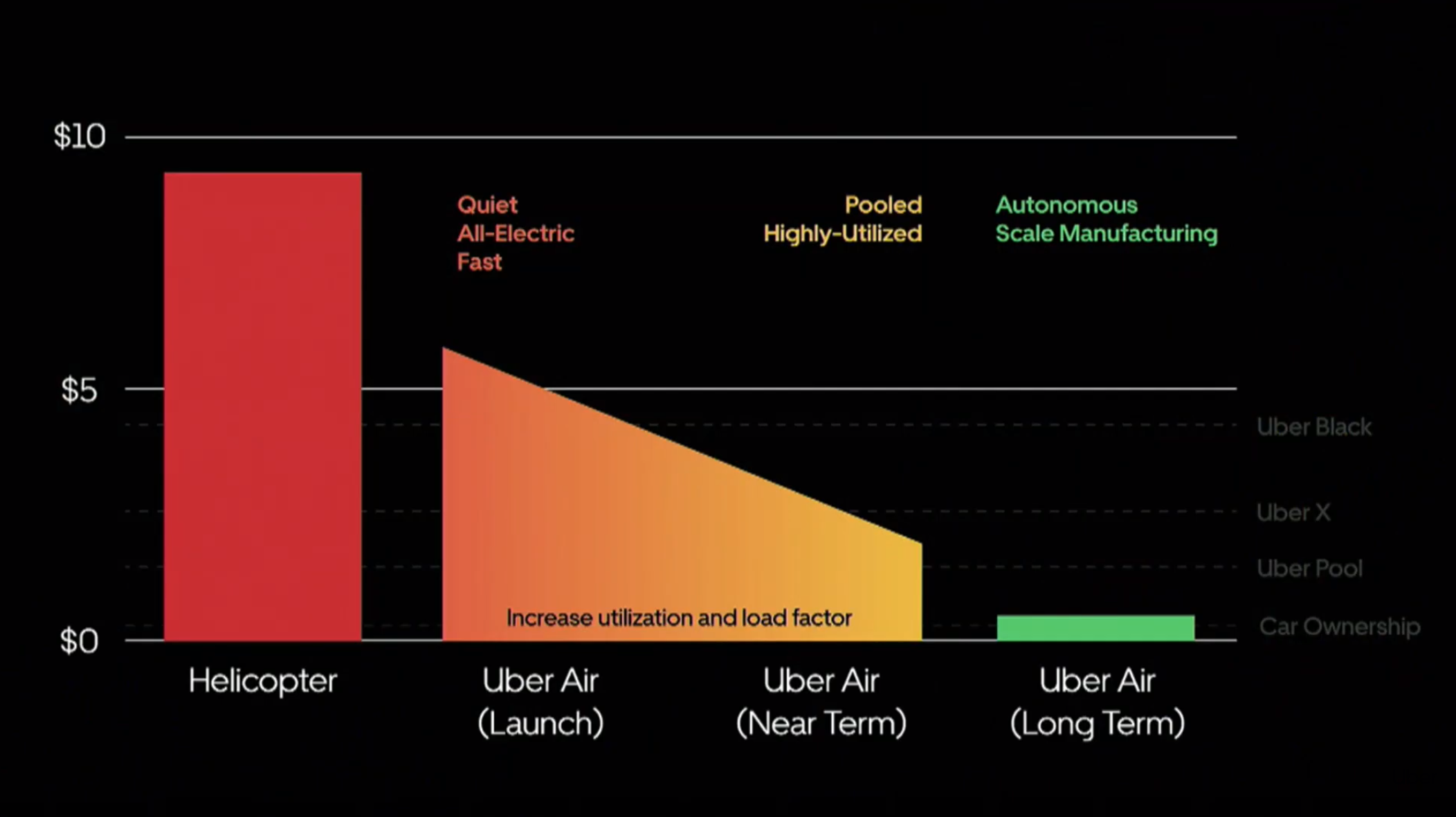
At launch, Uber Air will be cheaper than a helicopter ride. This is a worthy comparison, given Uber unveiled its costly Uber Copter service last week as phase one of Uber Air.
In the near term, Uber predicts Air will be comparable to the cost of Uber X and Uber Pool at around $2 per passenger mile. Long term, which is probably at least more than ten years from now, Uber Air will be more economical than owning a car, Uber Elevate Head Eric Allison said on the first day of the summit.
Looks cool, but is it safe?
Uber unveiled its Copter service at a less-than-ideal time. It came shortly before the second crash involving a helicopter in less than one month. The crash, unsurprisingly, raised concerns around operating these vehicles in densely populated areas. Well, that’s the entire premise of Uber Air. The goal is to fly over densely populated areas to make transportation more efficient by reducing street-level gridlock.
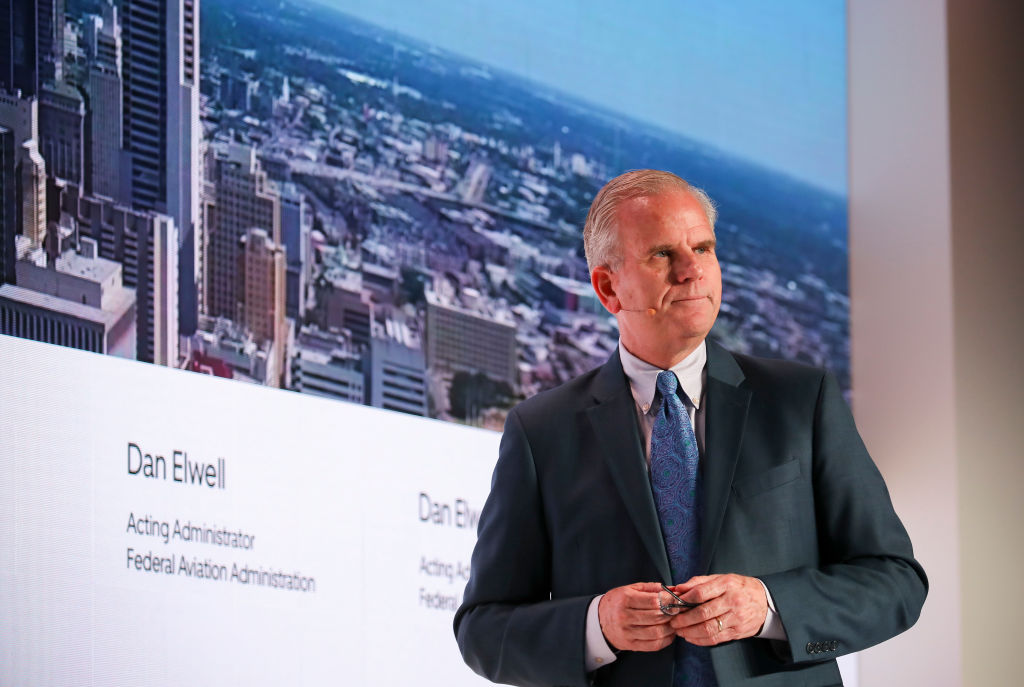
WASHINGTON, DC – JUNE 11: Dan Elwell, Acting Administrator, FAA speaks during the Uber Elevate Summit 2019 at Ronald Reagan Building and International Trade Center on June 11, 2019 in Washington, DC. (Photo by Tasos Katopodis/Getty Images for Uber Elevate)
Crashes like these undoubtedly do not help Uber’s case with the FAA. In fact, FAA Acting Chief Daniell Elwell spoke about the need for Uber to address safety concerns.
“You see the ideal way of transporting people across cities,” Elwell said on day one of Elevate. “I see car-sized vehicles with multiple rotors hanging over families out walking their dogs. That’s the challenge, taking an industry of incredibly bright minds and fast-moving technology and joining that with a regulatory agency that wants innovation, but only if it can be safely brought into an urban environment.”
He added that Uber needs to make its Uber Air operations synonymous with safety. That’s partly where Uber’s vehicle partners come in. Uber is not building these eVTOLs itself. Instead, it’s relying on the likes of Boeing subsidiary Aurora Flight Sciences, Embraer, Bell, Karem Aircraft and other aviation manufacturers.
At Elevate, Uber Elevate Vehicle Component Tech Lead Jacek Kawecki outlined Uber’s approach to safety across three key areas: the operational environment and process, airspace management, and vehicle operations and automation.
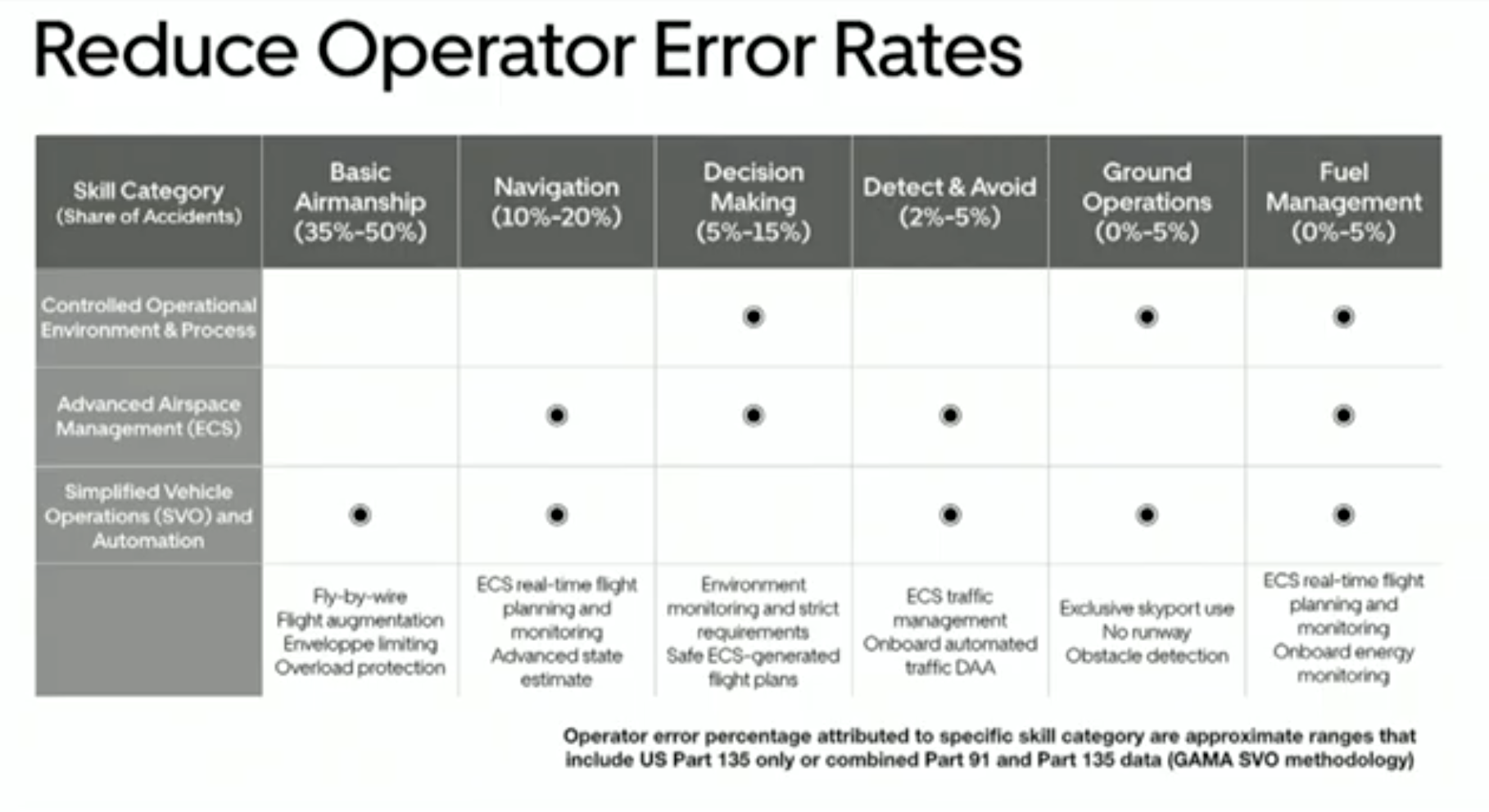
“Uber and our vehicle partners are investing in these areas — these three levers — to reduce operator errors,” Kawecki said. “Our analysis shows it is feasible to reduce operator errors by 80 percent by launch.”
In the medium and long term, he said he expects an even further reduction in operator error. Once Uber reaches full autonomy, there would be zero operator error.
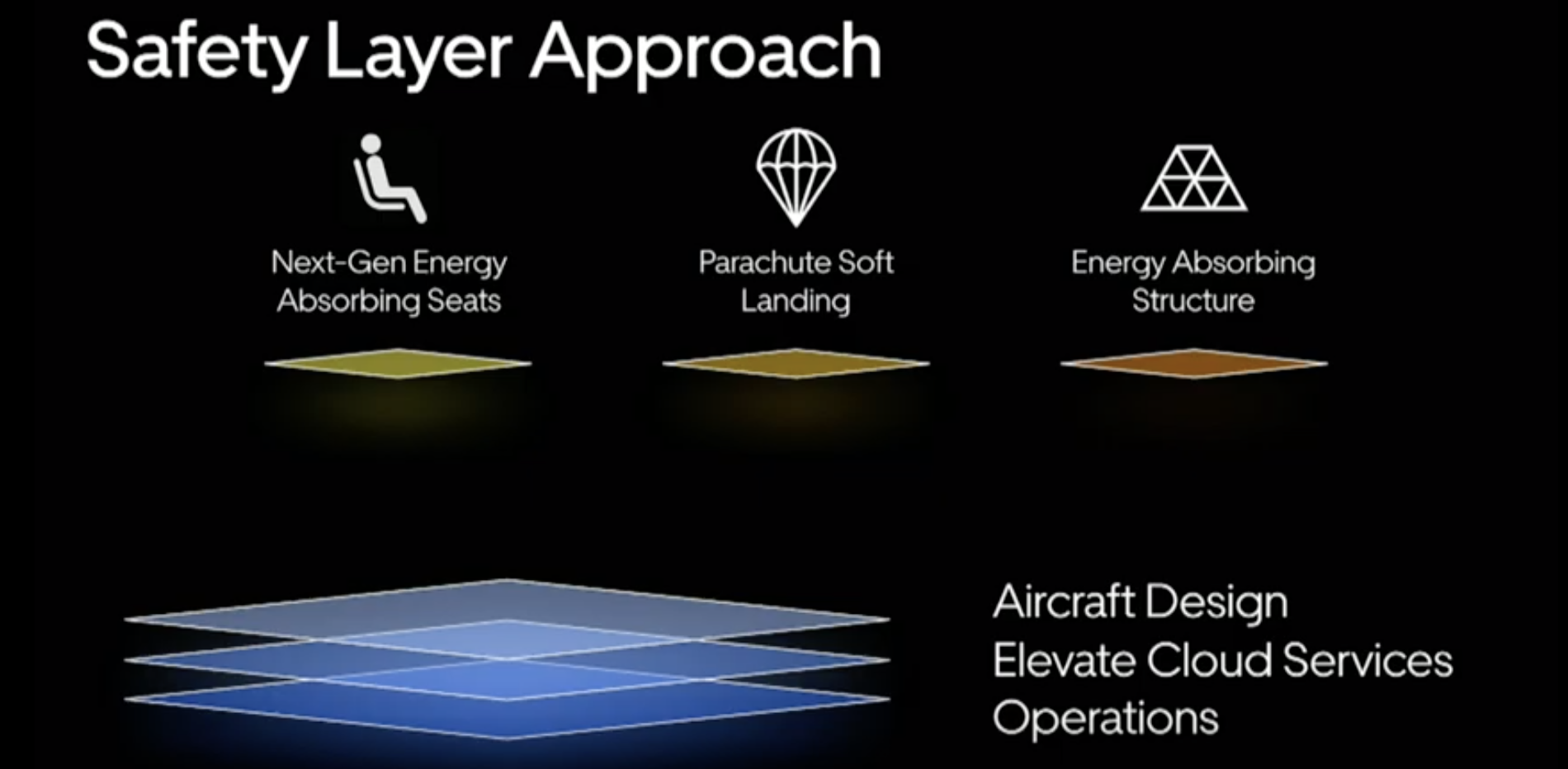
To prevent accidents, Kawecki says Uber is taking a multi-pronged approach. Called the “Safety Layer” approach, it provides “multiple, dissimilar methods for preventing accidents,” he said. On top of that, Uber sees value in harm barriers like energy absorbing seats, parachute soft landing systems and an energy absorbing structure.
In addition to safety concerns, every day people generally wonder about noise. Uber is paying a lot of attention to noise. In fact, certain eVTOLs are 15-decibels quieter than a helicopter of the same size, Uber Elevate Data Scientist Rohit Goyal said at Elevate. Noise may actually be one of the least of Uber’s problems in getting these vehicles to market.
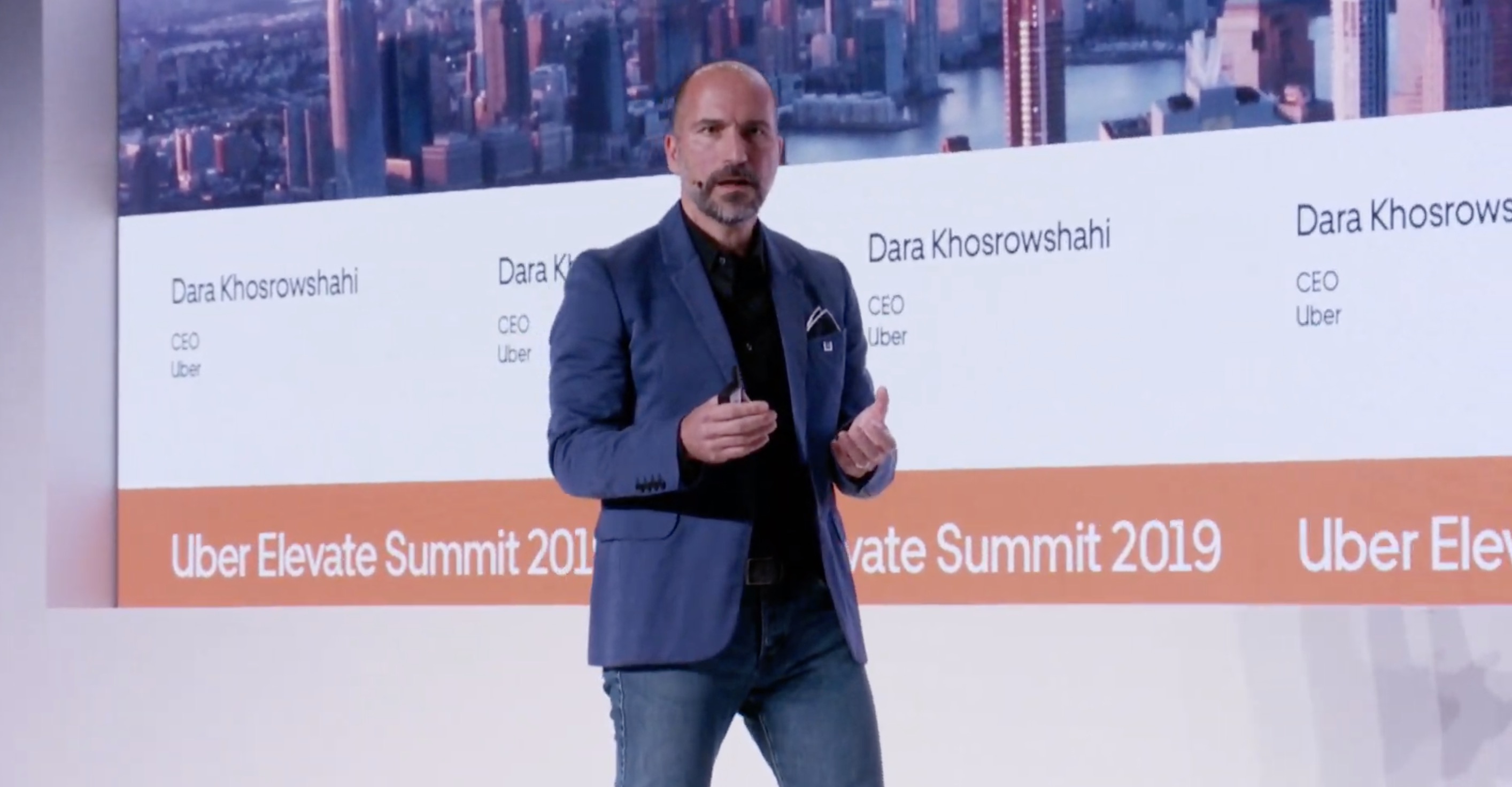
Uber CEO Dara Khosrowshahi speaks Wednesday, June 12, 2019 at the Uber Elevate Summit in Washington D.C.
The best case scenario for Uber Air is compelling. Imagine a world where you can live 20 miles away from work and get there in a fast, cost-effective way. As Khosrowshahi said at Elevate, “access to mobility and access to city centers is the key to opportunity.”
Imagine it being cheaper to fly via Uber Air than to own your own car, and living in greener cities with less congestion. As more of the world’s population moves into denser urban environments, Uber wants to bring transportation into the third dimension.
Uber Copter is the first phase of that, Khosrowshahi said. It’s less about flying helicopters and more about understanding how to operationalize the process to figure out how many rides it can handle and how much time it can save.
In combination with traditional ride-hailing, bikes, scooters and public transit, Uber wants to be more than just the Amazon of transportation. It wants to be the Google of transportation, Khosrowshahi said.
“It’s going to take a huge amount of work,” Khosrowshahi said, later adding that Uber is taking a big, but necessary leap. It’s necessary in order to make cities greener, safer, less congested and ultimately more inclusive, Khosrowshai said.
“We want not just to be the Amazon of transportation, but also the Google of transportation,” Khosrowshahi said. “We want to be your everyday use case when you wake up and you go to work, or you go out to eat or you go see a friend. We want to be there.”
